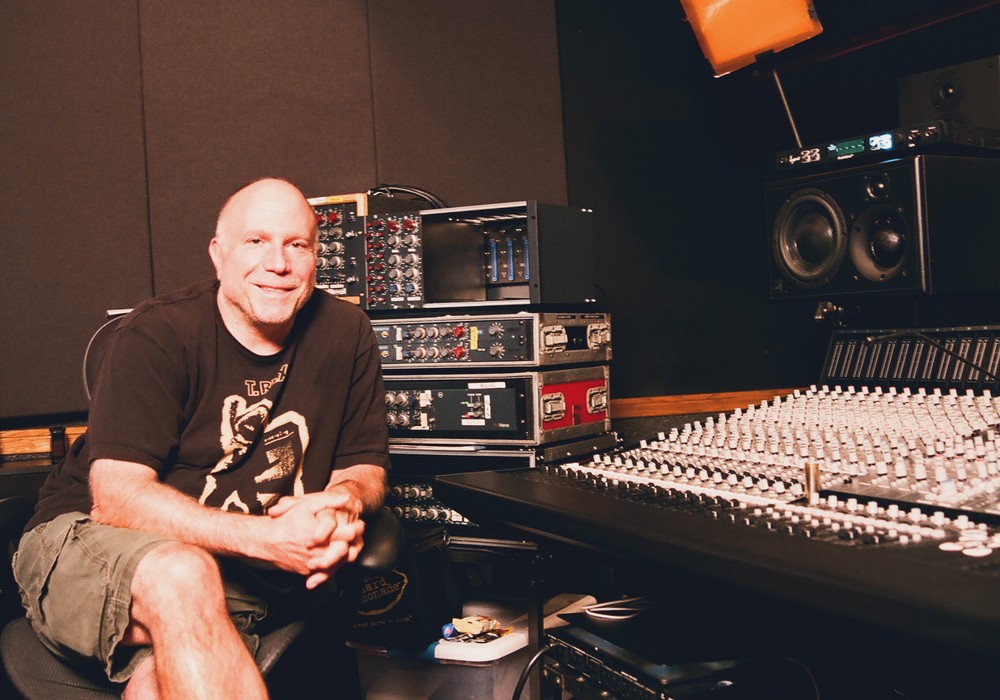The PreSonus MP20 is a microphone and instrument preamp consisting of dual Class A discrete input buffers followed by a dual-servo gain stage. This design translates into a low-noise, high-gain box. The following features are available on each channel: gain, 80 Hz rumble filter, 48 V phantom power, phase reverse, send-return insert jacks, and 20 dB pad. An illuminated red power button is easily accessed on the front panel. The unit has two unique features, an IDSS circuit and a stereo headphone L-R mix bus. The IDSS control adjusts the drain current on the input FET amplifier, altering the levels of the even harmonics in the signal being amplified. IDSS has an adjustment range of 0% to 100%. The 0% position passes a pure signal. As the control is rotated to the 100% position, the signal's even harmonic series is boosted, giving the signal "warmth" according to PreSonus. The MP20's stereo summing bus monitor allows one or both channels to be assigned to the L-R buss. A pan knob allows the placement of the selected signal anywhere in the stereo field. The mix outputs can be used to feed monitoring devices, while the channel direct outs feed the recorder. This is very useful for fighting latency while tracking on digital systems.
In use, the MP20 is very flexible. Keeping the IDSS at 0%, the sound of the unit resembles that of pristine "straight wire" preamps. Although I personally would not characterize the effect of the IDSS as making a signal "warm," it does roll off some of the top-end clarity in favor of a more round tone. I found that IDSS was most useful in ranges from 9 o'clock to 2 o'clock on the dial. Past that, the unit seems to emulate that "wool sock over the microphone" sound. (But if that's your bag....)
We compared the MP20 to the Avalon AD2022 Dual Mono Pure Class A Preamplifier, the Peavey VMP-2 tube preamp, and the preamps in a Mackie 1604-VLZ mixer. Against the Mackie, there was a very noticeable difference in realism and detail. In short, most people would pick out the MP20 in a blind test. Adding the IDSS feature, we compared the MP20 to the Peavey VMP-2. Both units sounded "present" with the Peavey having slightly more gain, stronger mids, and a generally "bigger" sound. Clearly the IDSS is an added-bonus, not a full replacement for a high-end tube preamp. Pulling the IDSS back to zero, we put the MP20 head to head with the Avalon AD2022. In terms of stereo image and depth, the Avalon did sound slightly better. I could see how someone who made a living off of stereo recordings of acoustic or chamber music would opt for the Avalon. But for those of us recording rock, techno, or ensemble music, the MP20 was more than sufficient. We were actually evaluating the Avalon against the MP20 for purchase. Although we agreed the Avalon sounded "better," we concluded that for our purposes, the Avalon did not sound $1,900 dollars better (the difference in street prices between the units). Whether you are looking for a first preamp investment or you already own a rack of respectable units, the MP20 provides amazing bang-for-buck performance. Get a unit for evaluation in your environment. I'll bet you will be pleased. ($699.95 MSRP; www.presonus.com)





_disp_horizontal_bw.jpg)